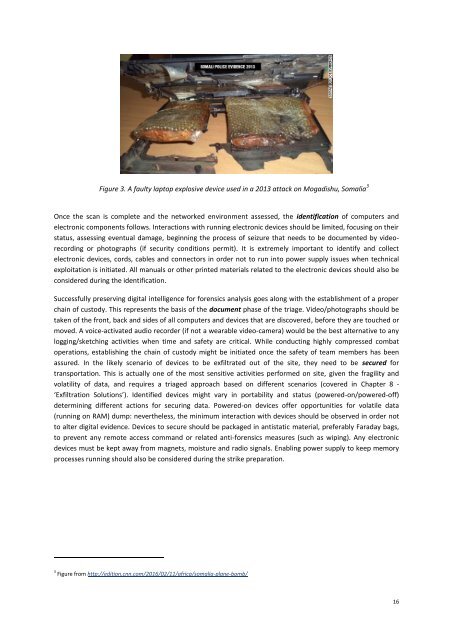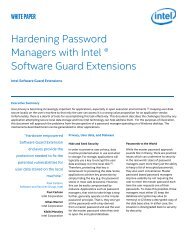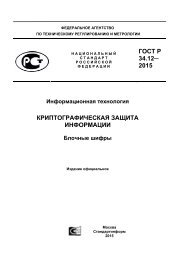BATTLEFIELD DIGITAL FORENSICS
BDF_Battlefield_Digital_Forensics_final
BDF_Battlefield_Digital_Forensics_final
Create successful ePaper yourself
Turn your PDF publications into a flip-book with our unique Google optimized e-Paper software.
Figure 3. A faulty laptop explosive device used in a 2013 attack on Mogadishu, Somalia 3<br />
Once the scan is complete and the networked environment assessed, the identification of computers and<br />
electronic components follows. Interactions with running electronic devices should be limited, focusing on their<br />
status, assessing eventual damage, beginning the process of seizure that needs to be documented by videorecording<br />
or photographs (if security conditions permit). It is extremely important to identify and collect<br />
electronic devices, cords, cables and connectors in order not to run into power supply issues when technical<br />
exploitation is initiated. All manuals or other printed materials related to the electronic devices should also be<br />
considered during the identification.<br />
Successfully preserving digital intelligence for forensics analysis goes along with the establishment of a proper<br />
chain of custody. This represents the basis of the document phase of the triage. Video/photographs should be<br />
taken of the front, back and sides of all computers and devices that are discovered, before they are touched or<br />
moved. A voice-activated audio recorder (if not a wearable video-camera) would be the best alternative to any<br />
logging/sketching activities when time and safety are critical. While conducting highly compressed combat<br />
operations, establishing the chain of custody might be initiated once the safety of team members has been<br />
assured. In the likely scenario of devices to be exfiltrated out of the site, they need to be secured for<br />
transportation. This is actually one of the most sensitive activities performed on site, given the fragility and<br />
volatility of data, and requires a triaged approach based on different scenarios (covered in Chapter 8 -<br />
‘Exfiltration Solutions’). Identified devices might vary in portability and status (powered-on/powered-off)<br />
determining different actions for securing data. Powered-on devices offer opportunities for volatile data<br />
(running on RAM) dump: nevertheless, the minimum interaction with devices should be observed in order not<br />
to alter digital evidence. Devices to secure should be packaged in antistatic material, preferably Faraday bags,<br />
to prevent any remote access command or related anti-forensics measures (such as wiping). Any electronic<br />
devices must be kept away from magnets, moisture and radio signals. Enabling power supply to keep memory<br />
processes running should also be considered during the strike preparation.<br />
3 Figure from http://edition.cnn.com/2016/02/11/africa/somalia-plane-bomb/<br />
16





